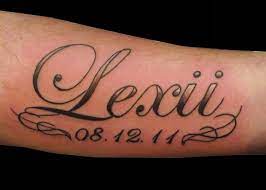
Henna is a plant-based dye often used at weddings and other celebrations to decorate guests, and it also makes for an effective temporary tattoo that lasts up to two weeks before it fades away. Henna is an all-natural solution for temporary tattoos that offers safe, natural results without using harsh pigments or additives – an excellent realistic, secure, and cost-effective option!
Origins
Henna tattoos date back to ancient Egypt. Since its debut, this art form has been utilized as temporary skin decoration and to mark special milestones such as birthdays or graduation. Henna is a natural dye made from the Lawsonia inermis plant. This flowering shrub thrives in hot and dry environments and produces an orange or brown paint easily absorbed by skin cells. Henna has long been part of many cultures and religions throughout the world and remains a popular way to mark special occasions. Additionally, it can symbolize beauty, fertility, and happiness in some cultures.
Symbols
Henna tattoos can be powerfully symbolic and represent good fortune, prosperity, wisdom, protection, or anything else you find essential. Popular symbols include birds, paisleys, flowers, vines, and wing designs; these symbolic representations often symbolize change or renewal. Birds, dragonflies, and butterflies often stand for renewal and transformation. These designs can be drawn on your arms, legs, back, and stomach area, looking beautiful against both surfaces.
Furthermore, they also make an impressive statement on the face and neck area. Eye patterns are an eye-catching henna design that symbolizes wisdom, prosperity, and spiritual protection. They’re often drawn on hands or sleeves and the back, shoulder, or collarbone areas.
Techniques
Henna tattoos are exquisite creations featuring intricate linework that reflect India’s traditional culture, such as designs incorporating beaming suns, flowers, or mandalas. Henna tattoo dyeing is noninvasive, safe, and harmless as it does not penetrate dermis layers or cause allergic reactions. Henna tattoos are commonly applied to hands, wrists, and legs for temporary decoration. Removal can be achieved by washing with alcohol-containing soap. If you want a faster method for removing henna tattoos, using abrasives like salt or sand may help speed up the fading process. While this may leave your skin raw and dry, adding honey or aloe vera into the mix may further soothe and expedite this process.
Care
Henna is an ancient body art from India and the Middle East that uses natural plant dyes to create temporary tattoos. Henna tattoos are created by applying henna paste directly to the skin and drawing designs with it, dries to stain it a reddish-brown hue that gradually deepens over the next 48 to 72 hours after oxidation occurs. The darker the stain, the longer it will last – plus, no allergic reactions were experienced from using henna! However, taking proper care of your henna tattoo is crucial if you want it to last as intended. Moisturizing regularly and not washing it regularly are among the keys to long-lasting henna art. Moisturizing oils like olive, sesame seed, or coconut will extend the longevity of your henna tattoo! Additionally, avoid products containing alcohol or harsh chemicals, as these may prematurely fade your design.

